A simple hot sauce made from highbush cranberry juice, ginger, a habanero or two, salt, and not much else. It's a good break from traditional hot sauce if you need some variation.
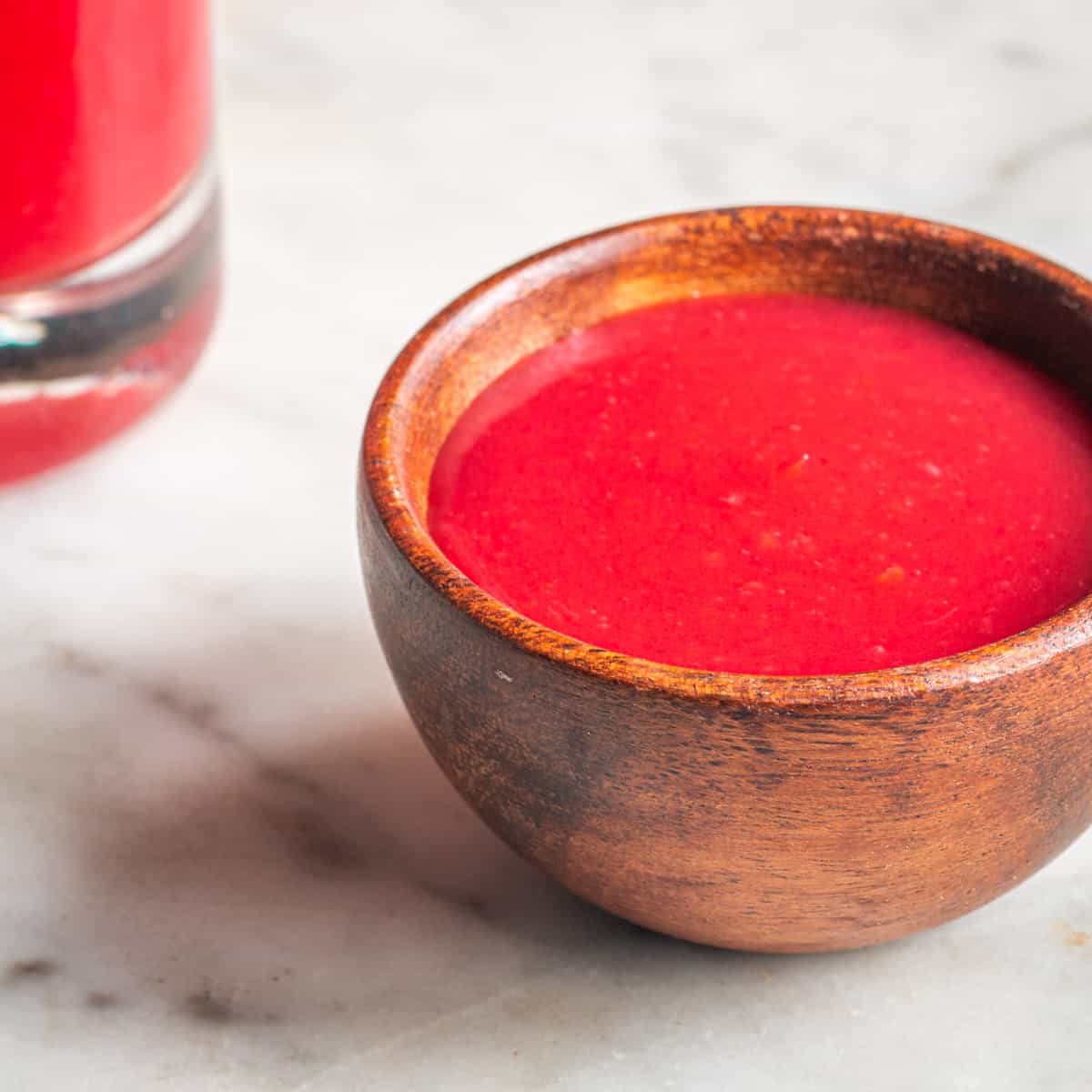
Highbush cranberries are a great fruit: they're easy to harvest, bountiful when you find a good patch, and reliable, as birds seem to leave them on the tree longer than others, at least from my experience.
The fruit makes a great jelly, pates de fruits, traditional cranberry sauce, colored apple sauce--they're a great addition anywhere their red color and tart flavor would be appreciated, but there's more to them than sugary preserves.
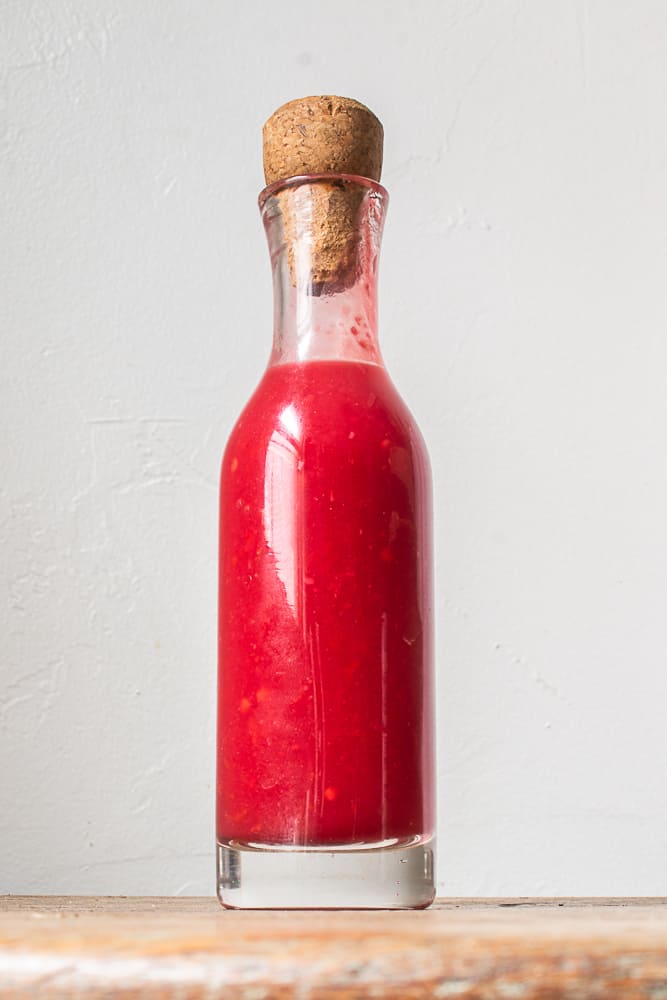
Hot sauce is a good example of something different you can make with them that shows off the red color of highbush cranberries in a novel way. The flavor of the fruit, unlike something naturally sweet like a serviceberry, apple, or blueberry, say, is tart and sour—both things that are welcome in the savory world.
Oh, and highbush cranberries are juiced before they're used, so you already have a liquid ready to go, all you have to do is add some flavors, puree it, and you get a beautiful fruit-based hot sauce.
Highbush juice, habaneros, and not much else
You can throw just about anything in a jar with some hot peppers and call it hot sauce, but here I took a minimalist, rustic approach to preserve the color and character of the fresh berries. All I used was 2 fresh habanero for the big heat in a small package, as well as for the complimentary color, along with a nick of garlic and ginger.
I mixed everything together then pureed it in a blender just long enough to break it up nice without breaking the pepper seeds, since seeds look nice in hot sauces, and breaking them could make it bitter.
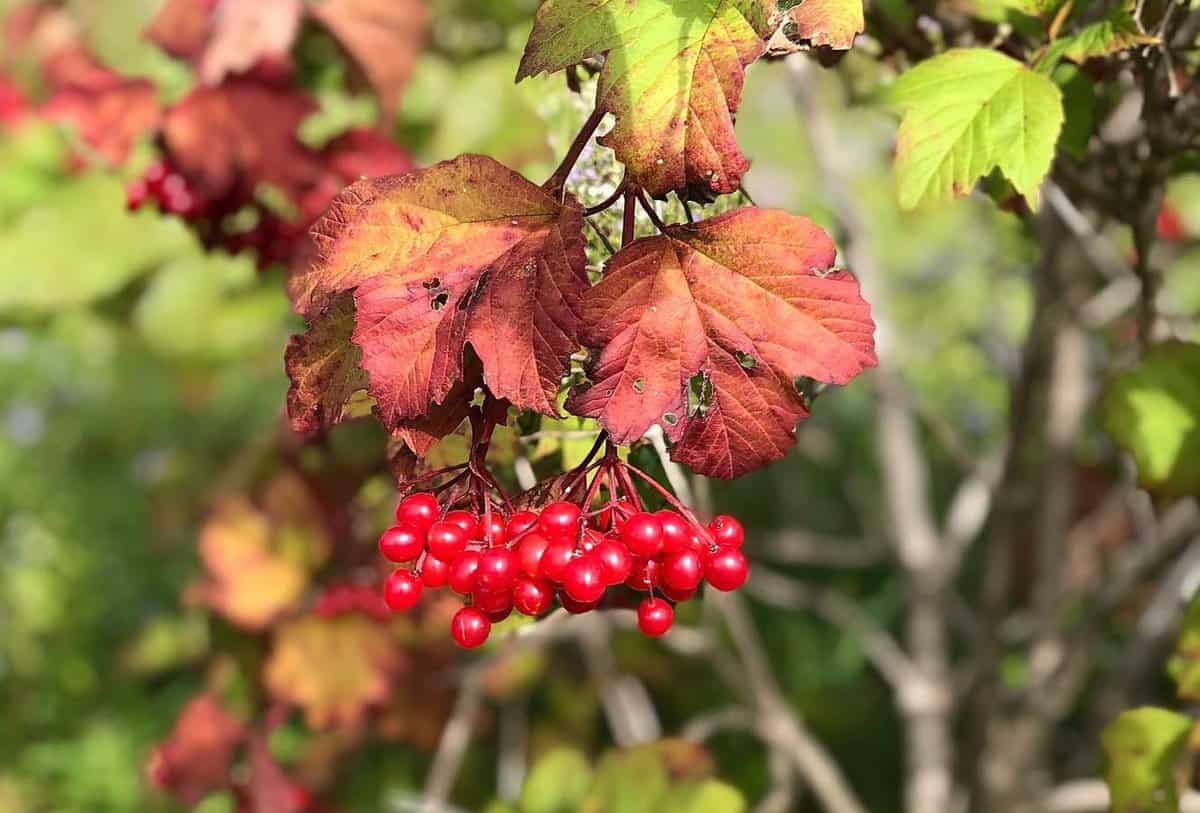
What you get is a nice, reasonably hot sauce that you can enjoy in a larger amount than something like, Tabasco. And the aroma. Part of the reason I chose habaneros instead of something comparable like fresno peppers, cayenne, or chili powder is the floral quality they have, which is nice mingling on the nose alongside the woodsy perfume of fresh highbush cranberry juice.
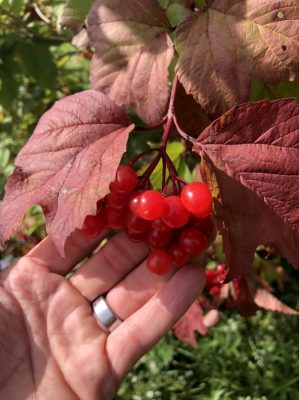
Making adjustments to the basic sauce template
This basic hot sauce is just a blank slate; there's all kinds of ways to tweak it to your taste or make it your own. Here's a few tips.
Adjusting the salt
The nice thing about weighing ingredients for making condiments like this is that you can confidently, easily adjust different aspects of it. If you want a saltier sauce, start by adjusting the percentage of salt by 1%-2% increments. For example, the basic sauce is made with about 5% weight in grams of the total volume of mass, so if I wanted it saltier, I might adjust that up to 7%, or 35 grams of salt.
Sauce too thin?
I thicken the sauce with xanthan gum here, for the minimalist quality (it's flavorless) but also since it won't affect the red color. But, there's plenty of other ways to thicken the sauce if you don't have some xanthan gum laying around.
- One way to thicken the sauce is to start with a larger volume of highbush cranberry juice than the recipe calls for and reduce it down a bit, 25% of it's volume would be a good start.
- Another way to thicken the sauce is to add another ingredient or two: a handful of chopped, peeled and seeded tomato pulp would work, as would a few pieces of roasted, skinned bell pepper.
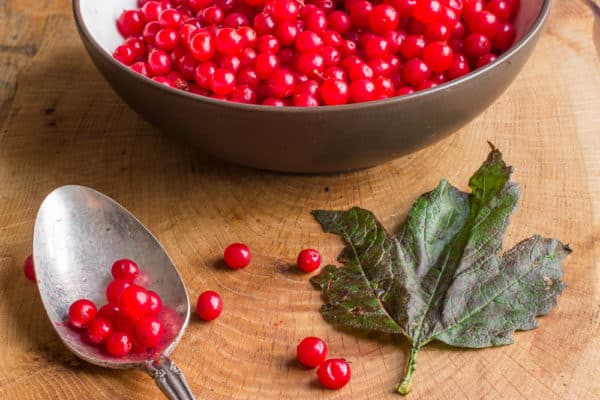
Highbush Sweet Chili Sauce
But just wait, it gets better. If sour hot sauce isn't your thing, or just for a variation, adding sweetness was really good too. For the second batch I did, after I was pleased with the ferment I added honey, both to add some body and give it a sweet jolt.
That sauce reminded me right away of the sickeningly sweet Thai chili sauce thickened with cornstarch I used to toss with vegetables in a wok back in my College cafeteria work/study program, were I was known as "Stir-Fry Guy". As odd as may sound, the heat, funk, and sweetness here really like added funk. Try adding ½ teaspoons of fish sauce at a time until it tastes good.
After it's seasoned, you can mix it with glugs of toasted sesame oil it tastes good enough to spoon over a bowl of rice or steamed greens. To make the sweet chili version, I added 1 oz of honey for each 5 oz of sauce, try it in a small batch to see how much sweetness you like.
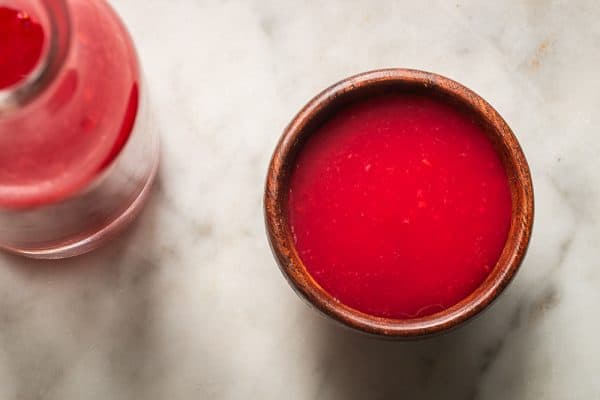
Highbush Cranberry Hot Sauce
Equipment
- 1 quart mason jar or similar
Ingredients
- 1 lb 2.5-3 cups highbush cranberries
- 1.5 cup water
- .5 cup Apple cider vinegar
- 25 grams roughly 1.75 T kosher salt
- 2 oz habanero two large
- 5 gram piece fresh ginger grated or minced
- 10 grams 1 large clove garlic, rough chopped
Finishing
- 1-1.5 teaspoons xanthan gum depending on how thick you’d like it*
Instructions
- Pulse the highbush cranberries, vinegar and water with a handblender to avoid breaking the seeds. Strain the mixture, you should end up with a slightly thick, opaque coulis of fruit.
- Wearing gloves, stem and dice the habaneros into 1 inch pieces, then mix with the salt, ginger and highbush cranberry puree.
- Bring the mixture back to a boil, then puree in a blender until smooth and bottle.
- The sauce will keep in the fridge for a few weeks, and can be processed in a water bath using the same processing times as pickles.

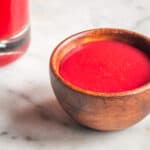
PENNY HEWITT
Hi,
I'm very excited to find this! I don't quite understand when the fementation process takes place. Is it after it is all pureed together that I leave it out to ferment in it's bottles?
Thanks
Alan Bergo
Penny, after some helpful reader feedback I found it was hard for people to replicate the fermentation, and it was mild to begin with. Adding vinegar and just making a basic hot sauce is now the method I recommend. I saw some of the text didn't align with that though so I adjusted the post for clarity. Thanks for commenting + LMK if I can help you trouble shoot anything.
Donna
I do not live in highbush cranberry country although they sound divine. Would bog cranberries work?
Alan Bergo
Donna, potentially yes. I haven't worked with bog cranberries, but if you cook them until soft, puree them very smooth, and strain the puree, adding a little liquid as needed to make a thick juice, it should work.
Cara
I've been envisioning a hot sauce with my highbush cranberries but didn't know where to start. Have you done one without fermenting the fruit, but just the peppers? I already have habanero pepper mash ferment I made ov er the summer when my habaneros were ready.
Alan Bergo
Sure you could do that. It will be easiest if you know the exact % salt of your pepper mash. Here's what I'd do: take the mash, mix it with the HBC juice to taste, add the amount of salt you need to bring it up to 5% by weight, then ferment it for two weeks and bottle. I'd start out small with the hab mash. 2 oz was plenty for me in the amount of juice I used in the recipe, if that's helpful.
Kathryn
Hi. I have these in my yard in Maine! They are like jewels! Question: When you say pour into a mason jar or other fermentation vessel are you implying that the mason jar has a special lid that allows air in or allows it to burp or would I screw a normal top on and leave it two weeks?
Thanks.
Kathryn
Alan Bergo
Burp the jar as you would any other ferment by removing the lid occasionally to release carbon dioxide. I prefer non-reactive plastic Ball brand lids.
Blair Miller
Perfect timing, as always. Thanks for the recipe!